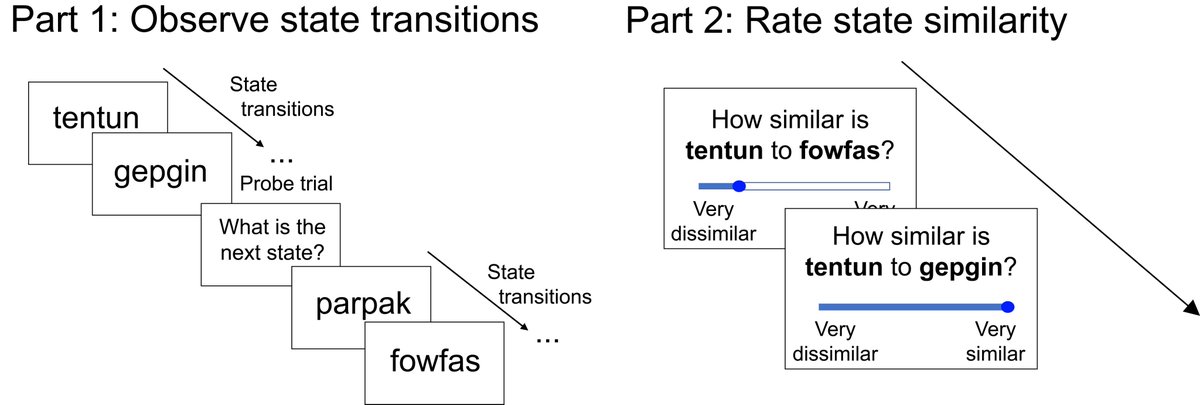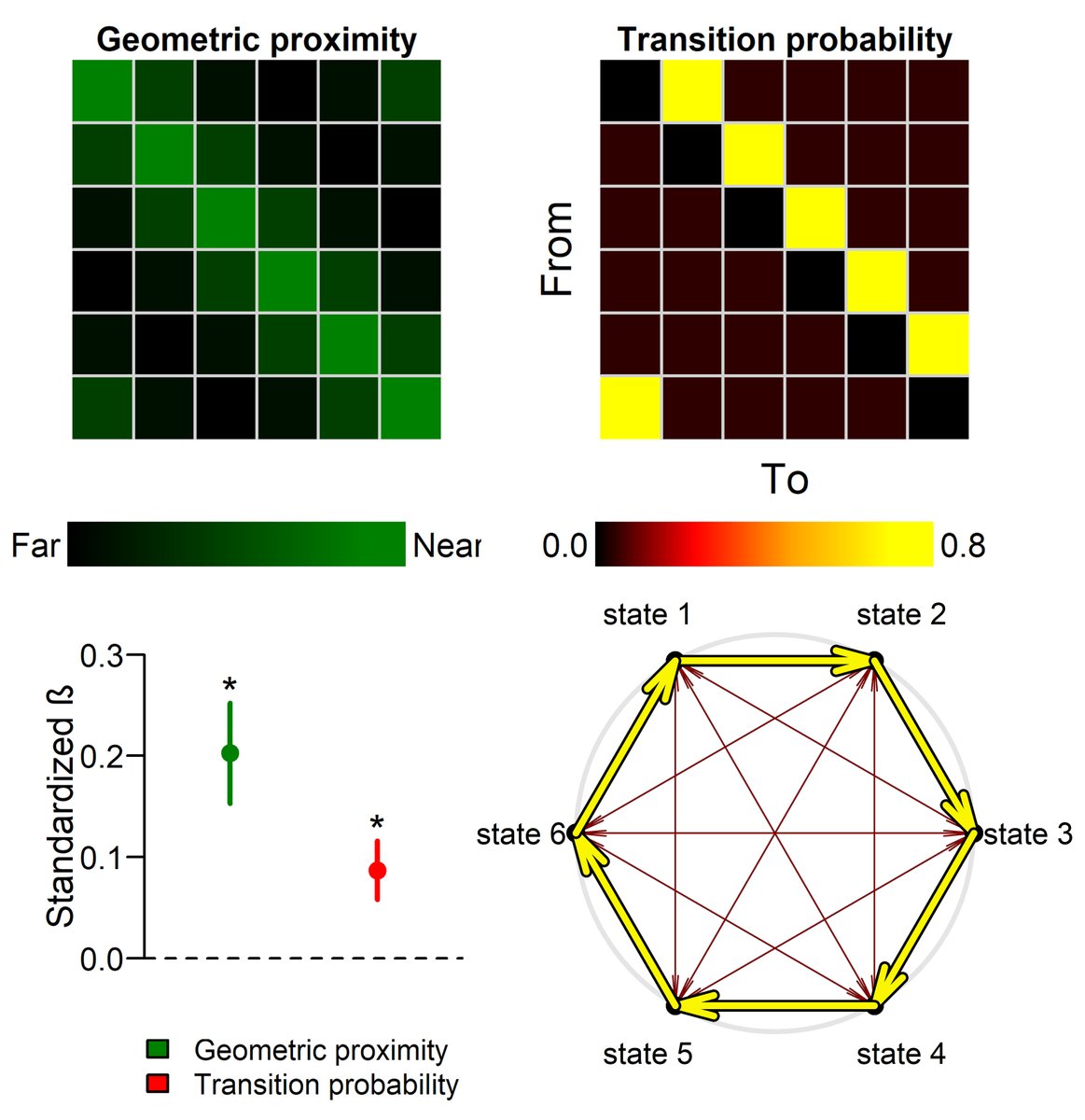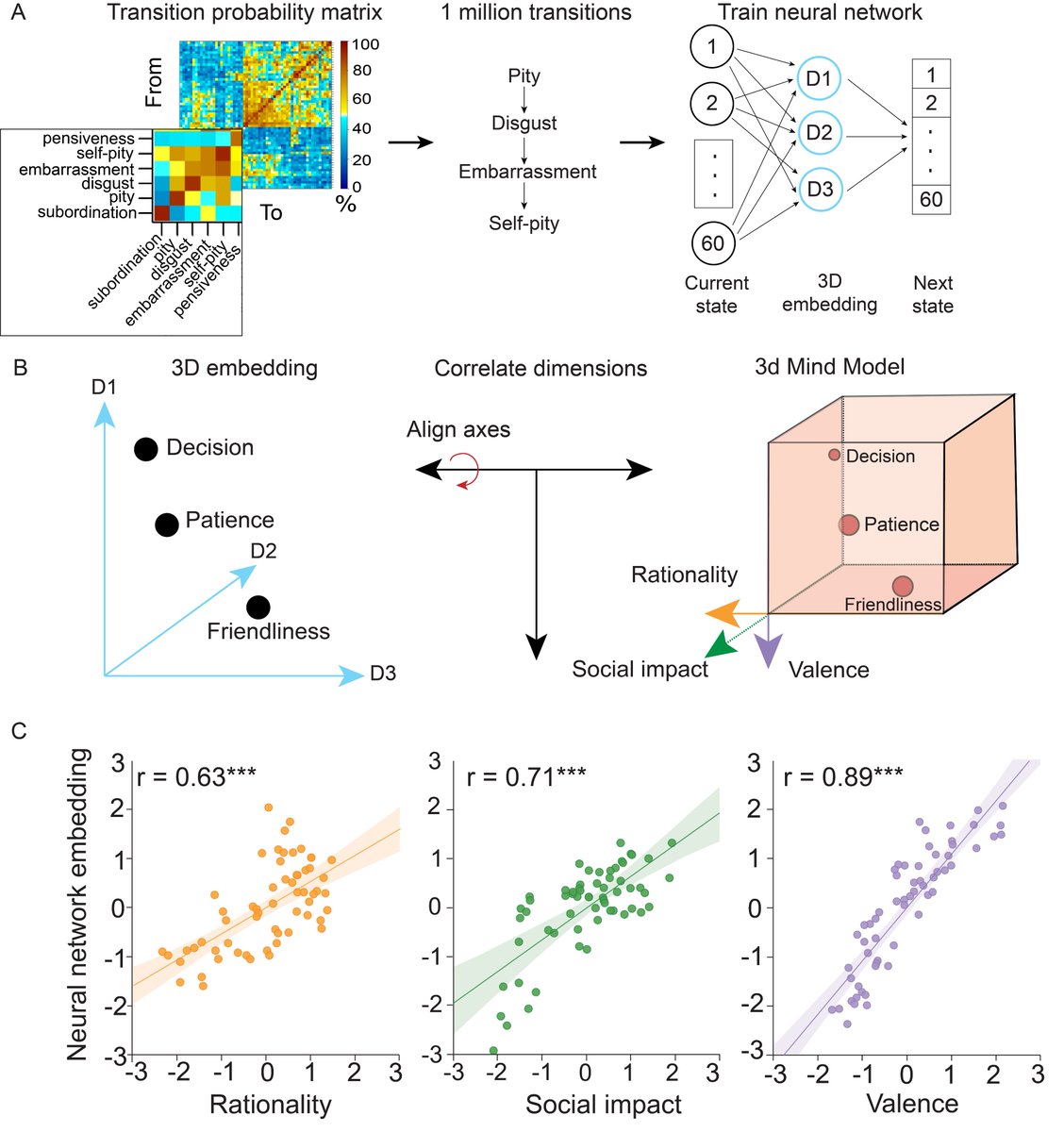New preprint from me, @milenamr7, & @DianaTamir! "People learn mental state concepts from mental state dynamics" We present evidence that the conceptual structure people apply to understand mental states is shaped by how those states transition over time. https://psyarxiv.com/kbcsj ">https://psyarxiv.com/kbcsj&quo...
People across the world understand mental states - thoughts and feelings - in different ways. However, there are certain conceptual dimensions that appear to be shared across cultures. See this thread on our cross-cultural work: https://twitter.com/Mark_A_Thornton/status/1245073926146981889">https://twitter.com/Mark_A_Th...
How can we explain these shared conceptual dimensions? Where does anyone& #39;s conceptual understanding of mental states come from in the first place? These are the questions we sought to answer in the present work.
Following our previous research (e.g. http://markallenthornton.com/cv/ThorntonTamir_PNAS_2017.pdf">https://markallenthornton.com/cv/Thornt... and http://markallenthornton.com/cv/TamirThornton_TiCS_2018.pdf)">https://markallenthornton.com/cv/TamirT... we hypothesized that people& #39;s mental state concepts come from their experience with, and goal of predicting, other people& #39;s mental state dynamics.
In 7 behavioral studies, participants took on the role of xenopsychologists on a mission to understand the thoughts and feelings of an alien creature. They viewed sequences of this creature& #39;s (novel) mental states, and then judged the conceptual similarity between these states.
Unknown to participants, we sampled the alien& #39;s mental state sequence from one of several pre-specified transition probability matrices (below) so that some states were systematically more or less likely to follow other states.
We modeled participants& #39; similarity judgments in terms of these transition probabilities, and found a significant positive association in all seven studies. This indicates that participants believed that states that tended to precede or follow each other were conceptually similar
This effect of dynamics on concepts persisted even when, as in Study 7, we independently manipulated a highly salient static feature of each state: alien& #39;s eye color. (The effects here should be compared cautiously since they are not calibrated to match real life effect sizes).
We also tested several computational models of how people translate transition probabilities into a conceptual structure, such as this geometric "state-space" account tested in Study 6:
We found that the geometric account provided the best explanation of similarity judgements, indicating that people represent state dynamics by arranging states as points in space where distance tracks transition probability. This is a highly efficient way to encode these dynamics
In Study 8 we conducted an experiment using an artificial neural network (ANN). This simple ANN was set up with the sole goal of predicting the next mental state in a sequence based on the current mental state in that sequence.
We trained the ANN on a sequence of 1M states sampled from real human mental dynamics between 60 representative states. To achieve good performance, the model had to learn to optimally arrange the states in a 3d embedding that reflected their dynamics.
We then compared the representation that the ANN had learned to the known structure of mental state concepts, embodied in the 3d Mind Model (thread here: https://twitter.com/Mark_A_Thornton/status/1215307484228919297),">https://twitter.com/Mark_A_Th... composed of the conceptual dimensions rationality, social impact, and valence.
We found that the ANN& #39;s prediction-optimized 3d representation closely resembled the 3d Mind Model. That is, the neural network spontaneously rediscovered the same conceptual dimensions that people apply to understand mental states.
Importantly, unlike a human the network had no prior knowledge of mental states, and no access to any of their static features. The fact that it rediscovered the same space thus indicates that mental state dynamics are sufficient to explain the structure of mental state concepts.
Together, these results provide compelling evidence that mental state dynamics - and the goal of predicting them - shape the way that people think about thoughts and feelings.
In addition to the preprint @PsyArXiv posted at the top of this thread, you can find our data, code and pre& #39;regs freely available @OSFramework here: https://osf.io/4m9kw/ ">https://osf.io/4m9kw/&qu...

 Read on Twitter
Read on Twitter








